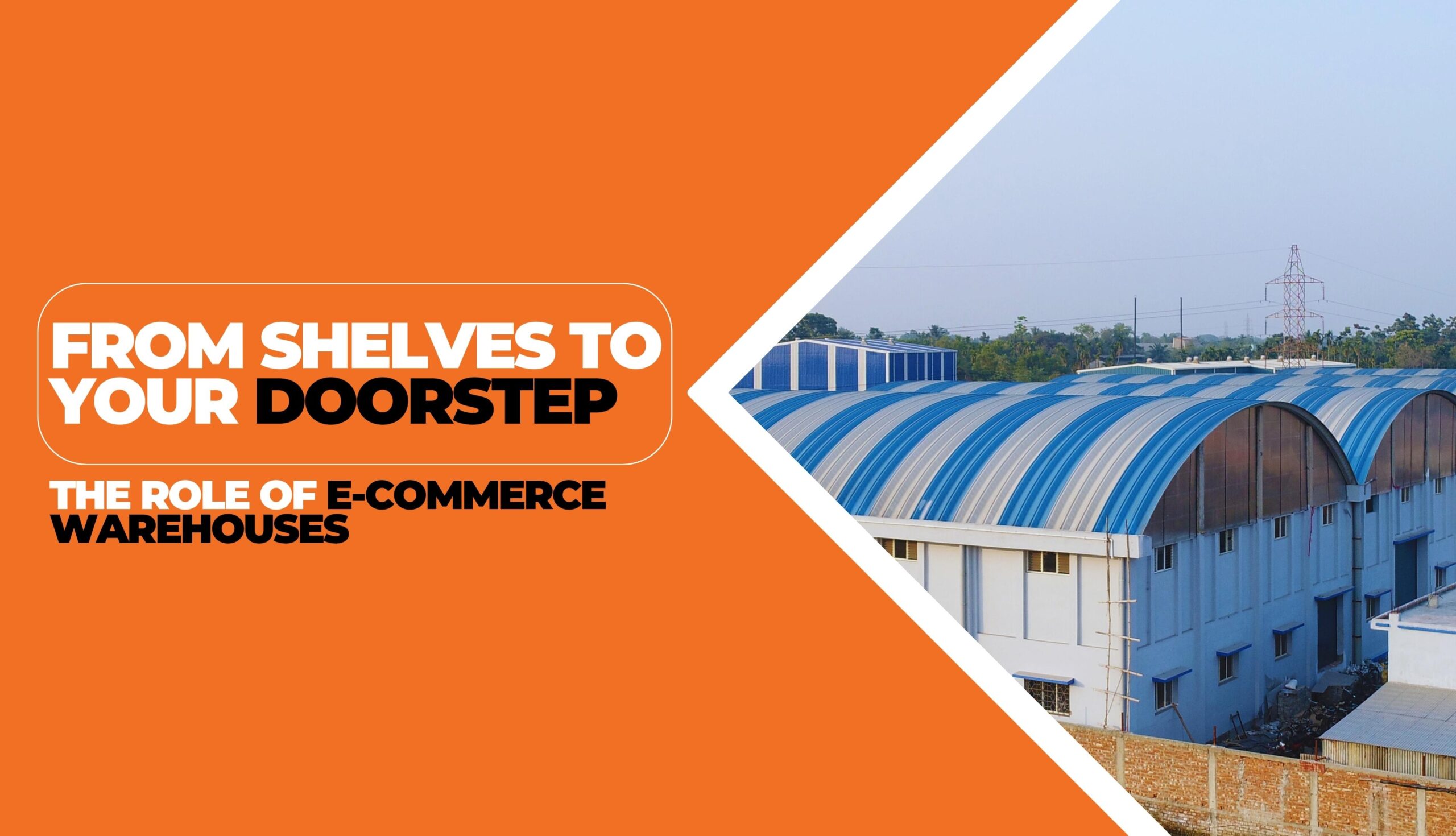In the fast-paced world of e-commerce, there’s a critical component behind the scenes that plays a pivotal role in ensuring your online shopping experience is smooth and efficient – e-commerce warehouses. These are bustling hubs where products are stored, picked, packed, and shipped to your doorstep. In this blog, we are going to give you a complete overview of e-commerce warehouses, describing their role in providing you with a smooth online shopping experience.
What is an E-Commerce Warehouse?
An e-commerce warehouse is a specialised space designed to store, organise, and distribute a wide range of products sold by online retailers. These e-commerce warehouse solutions are the backbone of the e-commerce industry, enabling companies to meet the demands of their customers efficiently. They can range from small storage spaces to massive fulfilment centres, depending on the size and scale of the e-commerce business.
Types of E-Commerce Warehouses
E-commerce warehouses come in various types, depending on factors like the size of the business, the types of products, and the location. Here are some common types:
Fulfilment Centres
These are large-scale warehouses operated by e-commerce giants. They are strategically located to ensure quick deliveries to customers. Fulfilment centres store a wide variety of products and use advanced automation systems for order processing.
Third-Party Logistics (3PL) Providers
Many smaller e-commerce businesses rely on 3PL providers for warehousing and distribution services. 3PLs have the infrastructure and expertise to handle various aspects of the supply chain, allowing e-commerce companies to focus on marketing and sales.
Cross-Docking Warehouses
These warehouses minimise storage time by receiving goods and immediately loading them onto outbound trucks, reducing handling and storage costs. They are ideal for high-demand, fast-moving products.
Layout and Design of the Warehouse
E-commerce warehouse solutions are designed with a specific purpose in mind: efficiency. To achieve this, they employ various design principles:
1. Racking Systems: Racks are used to maximise vertical storage space and make it easy for employees or robots to access products. This helps in optimising space and reducing the time it takes to pick items.
2. Order Processing Zones: Warehouses are often organised into zones, each dedicated to a specific function like receiving, packing, and shipping. This minimises the need for unnecessary movement within the warehouse.
3. Automation: Many e-commerce warehouses employ automation systems such as conveyor belts, robots, and sorting machines to streamline operations. Automation not only speeds up the process but also reduces errors.
Order Picking and Packing
Order picking is a crucial operation in e-commerce warehouses. This is the process of selecting items from the shelves to fulfil customer orders. There are different methods for order picking, including:
1. Person-to-Goods: In this method, workers move to the shelves and manually pick items for orders. It’s a common practice in smaller e-commerce warehouse solutions.
2. Goods-to-Person: Here, items are brought to the worker using conveyors or automated systems, reducing the time spent walking through the warehouse.
Once items are picked, they go through the packing process. This is where the products are prepared for shipping. The choice of packaging materials and methods is critical to ensure products arrive intact and undamaged.
Inventory Management
Inventory management is the heart of an e-commerce warehouse. It involves tracking the quantity and location of every product in real-time. This ensures that the right products are available for order fulfilment and prevents overstocking or stockouts.
E-commerce warehouses use technology such as barcode scanners and inventory management software to keep track of their inventory accurately. This real-time data is crucial for making informed decisions regarding restocking and managing the flow of products.
Shipping and Logistics
Shipping is the final step in the e-commerce warehouse process. Once an order is packed and ready, it needs to be dispatched to the customer. This is where the importance of logistics comes into play. E-commerce companies partner with shipping carriers to ensure timely and reliable deliveries.
Wrapping It up
In summary, e-commerce warehouse solutions are the hidden heroes of online shopping. They are strategically designed, employing automation, efficient order picking and packing methods, and meticulous inventory management. These warehouses are where the magic happens, ensuring that your orders reach your doorstep in the most efficient and cost-effective way possible. Now if you are looking for an e-commerce warehouse to expand your business, consider the Ganesh complex. We are one of the leading industrial space providers in Eastern India.









